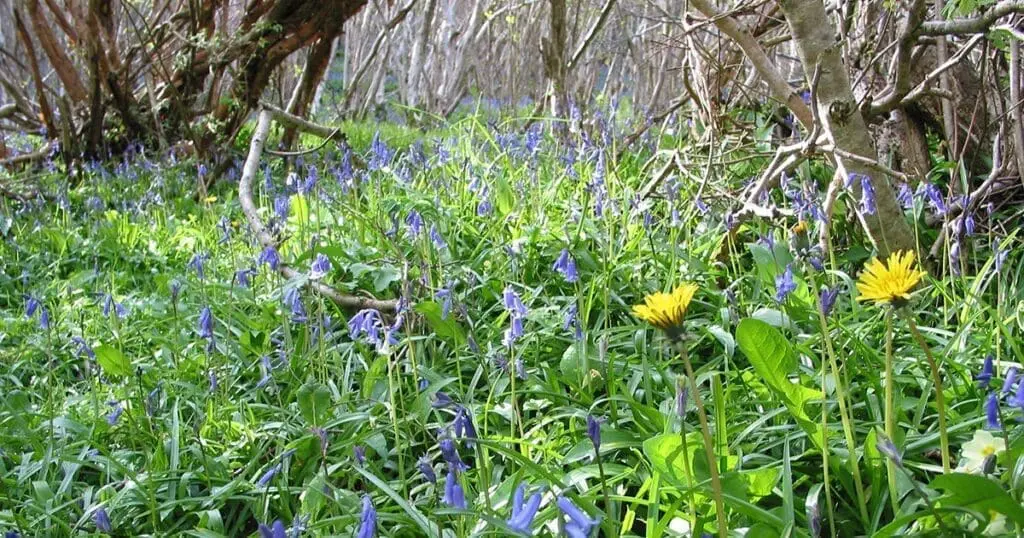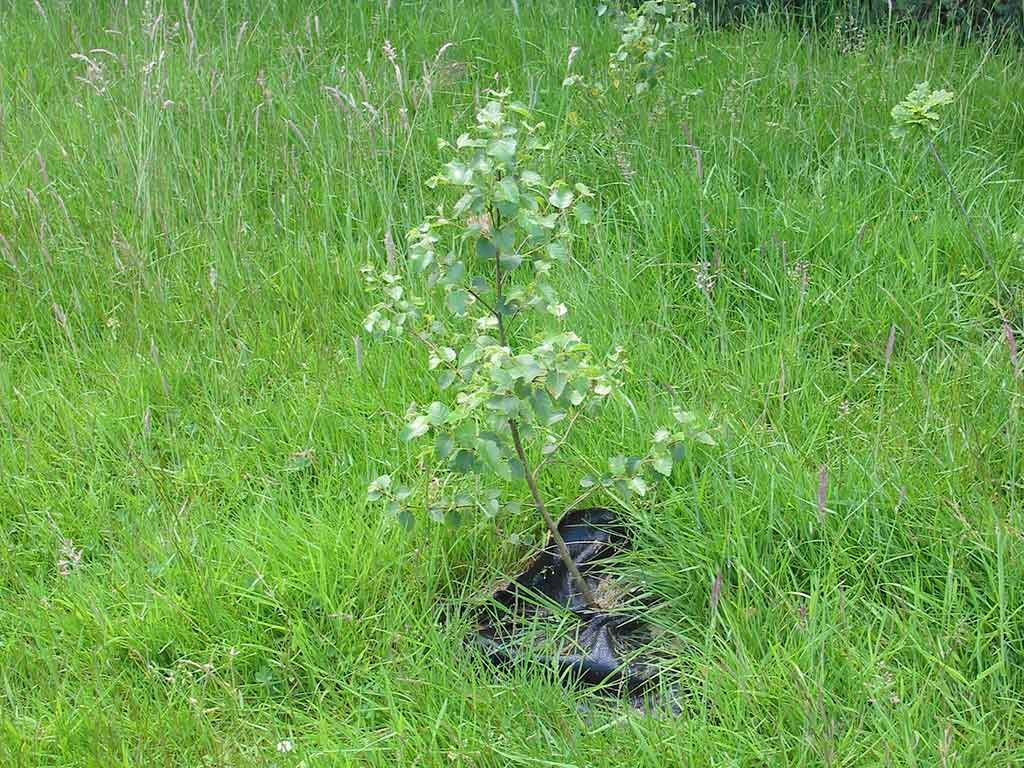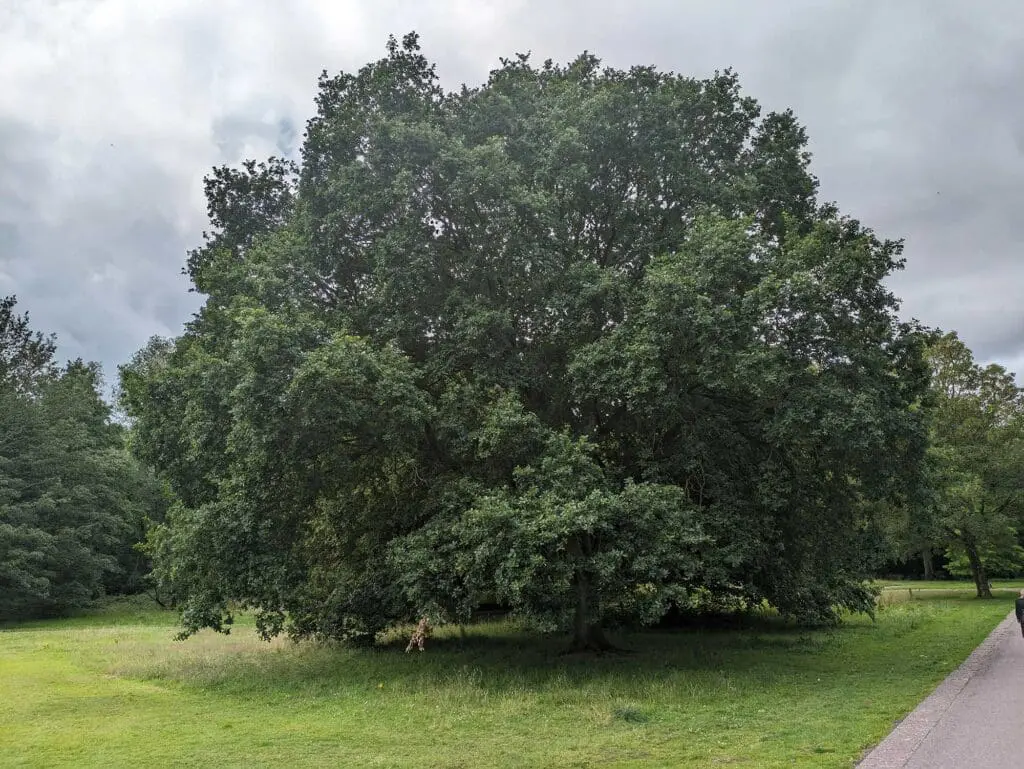Ancient woodlands represent our closest link with the ‘wildwood’ of prehistory. The small fragments of ancient semi-natural woodland that still exist the UK and Ireland provide a home for our natural flora and fauna; the birds, mammals, invertebrates, mosses and lichens, fungi, and plants that are associated with them.
When we look to create new native woodland, local provenance trees should play a part.
The ice age ends and climate warms
Severe climate fluctuations and geomorphologic changes have dictated the earth’s landscape and associated vegetation cover for millions of years. However, the history of today’s woodlands in Northern Ireland can be said to have begun about 10,000 years ago, after the end of the last ice age and when the climate had warmed sufficiently for trees to begin to colonise the bare land.
Ice has played a major role in shaping the landscape of Northern Ireland for almost 2 million years. Twenty-three cold and warm phases of climate have possibly been identified. During the last 132,000 years though, there is no doubt that the climate was cold enough on two occasions to allow the build up of large ice masses in the British Isles (Mitchell and Ryan, 1998).
The last of these cold phases began 35,000 years ago causing, at its peak, a massive dome of ice up to 600m deep to move down from the north to reach a line between the Shannon Estuary and Wicklow. Another cap of ice formed on the southwest highlands. This left a band of ice-free tundra across the south and in the extreme north and west. A more recent idea though, suggests that three ice domes on Ireland and one in the Irish Sea left no room for life at all on the island (Viney, 2003).
As the climate warmed rapidly around 13,000 years ago, whichever ice sheets existed began to melt, leaving behind a devastated landscape. Sea levels began to rise with the extra water freed from the glaciers. At the same time the land began to rise, relieved of the weight of the ice. There is much conjecture about the existence of land bridges between Britain and Ireland, but, somehow, plants and animals began to migrate from their glacial retreats further south.
Whichever way plants and animals either survived or arrived on this island, by 12,400 years ago plant cover on the young soils was complete, consisting of grasses, docks (Rumex), meadowsweet (Filipendula ulmaria) and least willow (Salix herbacea). Herds of reindeer (Rangifer tarandus) exploited the vegetation.
The climate continued to improve allowing the initial colonisers to be slowly replaced by species such as juniper (Juniperus communis), downy birch (Betula pubescens) and crowberry (Empetrum nigrum). This is the process known as succession. At this time we also see red deer (Cervus elaphus), wolf (Canis lupus), brown bear (Ursus arctos), arctic hare (Lepus timidus) and stoat (Mustela erminea) arriving.
Following a brief series of climatic deteriorations where plant cover broke up and even the arctic lemming (Dicrostonyx torquatas) is found in Ireland, grasses re-established themselves and the giant deer (Megaloceros giganteus) thrived. This lasted until 10,900 years ago when a “little Ice Age” occurred causing the extinction of this magnificent beast, along with the reindeer and, possibly, the red deer in Ireland (Viney, 2003).
Woodland development
This period of cold ended 10,000 years ago. At this point, we see improvements in climate to the point that closed canopy woodland can develop. Soils were still in their infancy and the extent of lakes was much greater than today. Juniper again colonised the meadows, willows (Salix spp.) and birches formed the first real woodlands.
Between 9,000 and 8,500 years ago, hazel (Corylus avellana) became dominant in areas where it was well suited and formed dense hazel-woods. Scots pine (Pinus sylvestris) also arrived and settled mainly in the west.
Towards the end of this period oak (Quercus spp.) and elm (Ulmus glabra) slowly spread across Ireland, generally overwhelming the hazel and forming high-canopy woodland.
It is thought that the climate was quite dry at this time (Mitchell and Ryan, 1998). Ash (Fraxinus excelsior) was probably confined to dry limestone soils and alder (Alnus glutinosa) to wet lake and river margins. This was a relatively stable period for Irish woodlands and lasted for 1500 years.

The climate changed again some 7,000 years ago, becoming wetter. Alder spreads and pine declines. Alder, oak and elm would have dominated the lowlands with pine and birch in upland areas.
First humans
This sequence of colonisation meant that there was dense, but varied, woodland waiting to greet Mesolithic humans as they arrived here 9,000 years ago. The lifestyle of these people had only a minimal impact on woodland cover in Ireland. They would have hunted animals around the edges of woodland, harvested seasonal nuts and seeds (hazel being very important) and fished along the coasts and in the rivers.
However, this all changed when the first farming activities were adopted by our ancestors in Neolithic times about 6,200 years ago. Evidence shows an increase in the presence of ribwort plantain (Plantago lanceolata), dock and nettle (Urtica) indicating clearance of woodlands to make room for agriculture (Mitchell and Ryan, 1998).
Pollen studies have shown that this coincides with a rapid decline in the elm population in Ireland, most likely caused by a disease similar to modern Dutch elm disease. Elm has a tendency to grow on the fertile soils that would have suited farming. Farmers had already begun to clear areas of forest for the cultivation of crops and grazing of domesticated animals. The dramatic deaths of millions of elms would have given farmers a helping hand.
Once exhausted, land was abandoned allowing trees to regenerate, refreshing the fertility of the soil. These areas could then be cleared again. The regenerated woodland was often quite different from the original. Thus began a long process of change in woodland composition and the isolation of woodland fragments to poorer sites unsuitable for agriculture.
Bog has been forming across northwest Europe for over 7000 years and in badly drained places in Ireland since the ice left (Viney, 2003). About 4,000 years ago, bog growth accelerated following a change to a cooler and wetter climate, although it is probable that forest clearance by Neolithic farmers and into the early Bronze Age, combined with trampling and overgrazing, directly caused this growth (Pilcher & Hall, 2001). The spread of blanket bogs replaced many pine forests, leading to the steady inevitable decline of the Scots pine, which began here and probably ended with it dying out in Ireland around 2000 years ago (Mitchell and Ryan, 1998).
Woodland clearance continued through the Iron Age, which was a time of dense population. The presence of over 30,000 raths throughout the island leaves little space for continuous woodland (Rackham, 1990). New technologies brought to Ireland from Britain included the plough, which enabled much more land than ever before to be cultivated.
The early Christian countryside was a varied mix of grassland, scrub and woodland, generally pastoral rather than arable. In fact, the first Anglo Norman colonists, who arrived during a comparative warm and stable period, wrote in 1188 “There are many woods… Crops abound in the fields, flocks on the mountains, wild animals in the wood” (Viney, 2003).
By the time of the Civil Survey of 1654-6 it appears that between 2 and 3% of Ireland was covered with trees. Rackham (1990) claims that only 10% of this woodland remained by 1800.
The pressure on land from agriculture and the clearance of remaining woodlands for industry and to fortify towns – a total of 150,000 oaks, 100,000 ash and 10,000 elms were used for the building of Londonderry (Viney, 2003) – was driven by a fourfold increase in population between 1700 and 1840. Concern about timber supplies forced a series of acts to be passed by parliament to protect remaining stocks and to encourage planting of trees.
In 1735 the Royal Dublin Society began to offer premiums for planting trees and plantations began to appear to provide for timber requirements. Estates managed to take advantage of these and forest cover increased, often with exotic trees, while, at the same time, much of the wider countryside was being cleared of remaining woodland to provide fuel and valuable agricultural land for the rising population (Mitchell and Ryan, 1998).
Northern Ireland’s trees and woodlands today
In the space of 6,000 years, Ireland has been reduced from 95% forest cover (Pilcher & Hall, 2001) to only 1.7% of Northern Ireland consisting of native broadleaved semi-natural woodland. In total, only 8.3% of Northern Ireland is covered in woodland (Cooper & McCann, 2002).
This compares quite unfavourably with the European Union as a whole, which has 38.3% of its land surface under trees (figures extrapolated from the European Environment Agency website in 2003) and makes Northern Ireland the least wooded area in the European Union apart from Malta! The gradual succession and adaptation of species over thousands of years, together with human activity, has led to a delicate woodland balance unique to Ireland today (albeit in small fragments).
What we would consider ‘natural’ woodland no longer exists in any part of Ireland and the original ‘wildwood’ is lost forever.
Alongside this decline in woodland cover, so our native plants and animals that would have been part of the woodland ecosystem have also declined, some to the point where they no longer exist here. Evidence of the great spotted woodpecker (Dendrocopus major) has been found, but it no longer exists.
The wild boar (Sus scrofa), once a major food source for Mesolithic people is no longer with us due to loss of habitat and hunting. It may be that our surviving woodlands are now simply too small and lack the standing dead wood to support such diversity – the nuthatch (Sitta europaea) is absent and marsh and willow tits (Parus spp.) do not breed here (Viney, 2003).
Woodland would have also been the natural home to Ireland’s only native grazing herbivore, the red deer. Today, many of our semi-natural woodlands suffer from overgrazing by domestic farm animals or lack of occasional browsing by passing deer.
However, parts of what we have left can be classified as ancient semi-natural woodland, affected on different scales by human management. These are now considered the only record remaining of our landscape’s natural tree heritage and are recognised internationally as important because of their extent and distinctive plant and animal communities. Such areas therefore deserve conserving, protecting, and expanding.
Our remaining woodlands have recently been afforded much more protection through designation as Areas of Special Scientific Interest (ASSI), Special Protection Areas (SPA), Special Areas of Conservation (SAC), 9 Areas of Outstanding Natural Beauty (AONB) and the 47 nature reserves that have been declared in Northern Ireland . This should ensure the continuing survival of this unique heritage into the future.
References
- Mitchell, F. and Ryan, M. (1998). Reading the Irish Landscape. Town House and Country House, Dublin.
- Cooper, A. & McCann, T. (2002). Habitat change in the Northern Ireland countryside: technical report of the Northern Ireland Countryside Survey 2000. Environment and Heritage Service. Belfast.
- Pilcher, J. and Hall, V. (2001). Flora Hibernica. The Collins Press, Cork.
- Rackham, O. (1990). Trees and Woodland in the British Landscape: The Complete History of Britain’s Trees, Woods & Hedgerows. Phoenix Press, London.
- Viney, M. (2003). Ireland. Blackstaff Press Limited, Belfast.




